A handmade baby blanket is one of the most meaningful gifts you can make: practical, comforting, and full of heart. The best baby-blanket designs balance softness, durability, and an easy rhythm so the project stays enjoyable from the first stitch to the final border. In this collection you’ll find six beginner-friendly yet modern blanket patterns — from airy lace to cozy textured stitches — each written with clear, step-by-step instructions, sizing guidance, yarn and hook recommendations, finishing tips, and simple ways to adapt the size or style.
All patterns use US crochet terms. I present a medium (crib) size as the main sample and give explicit notes for small (receiving) and large (toddler/throw) adjustments. Where stitch multiples matter I show them so you can change width without guessing. Follow the gauge recommendations when fit is important; otherwise these designs are very forgiving because baby blankets are drapey items.
1. Crochet Modern Lace Baby Blanket Pattern

Skill level: Confident beginner
Estimated time: 6–10 hours (medium)
Style: Light, breathable, slightly lacy — perfect for spring/summer babies or layered use.
Materials
- Yarn: DK / light worsted baby-friendly yarn (machine-washable acrylic or a cotton/acrylic blend) — Medium: ~700–900 yds (640–820 m).
- Small (receiving): ~450–600 yds; Large (toddler): ~900–1100 yds.
- Hook: 4.0 mm (G) or size to obtain gauge
- Yarn needle, scissors, blocking supplies
Gauge
- 18 dc + pattern = 4 in (10 cm) in pattern stitch with 4.0 mm hook. Swatch and adjust hook if necessary.
Finished sizes (approx.)
- Small: 30 × 35 in (76 × 89 cm)
- Medium: 36 × 45 in (91 × 114 cm) — shown in instructions
- Large: 40 × 50 in (102 × 127 cm)
Stitch pattern (Lace mesh)
- The stitch is a simple openwork mesh built from chains and double crochet groups so it’s quick and light.
- Multiple: 4 sts + 3 (for turning chain)
Abbreviations
CH, SL ST, SC, HDC, DC, BLO, RS, WS
Instructions — Medium (36 × 45 in)
Foundation: CH 147 (multiple of 4 + 3). For Small use CH 123; Large use CH 163.
Row 1 (RS): DC in 4th ch from hook (counts as first DC), *CH 1, skip 1 ch, DC in next 3 ch; repeat from * across to last 3 ch, DC in last ch. Turn.
Row 2: CH 3 (counts as DC), skip next DC, CH 1, DC in next DC; DC in next 2 DC — this maintains the DC groups and chain spaces. Turn.
Row 3: Repeat Row 2. Continue repeating Row 2 until blanket measures approx 45 in from cast-on edge (or desired length). Fasten off.
(Notes: Because the mesh alternates placement of chain spaces, counting the first few repeats ensures the pattern aligns. If you use different yarn, the stitch height may change slightly; measure the length as you go.)
Border (simple eyelet border)
- Join yarn at any corner. Round 1: SC evenly along edges (work 3 SC into corners). Work SC around entire blanket; join.
- Round 2: CH 3, skip 3 SC, SC in next SC repeat across; make 3 SC in each corner. Join.
- Round 3: SC around to neaten. Fasten off and weave ends.
Finishing
- Gently block to open the lace and square the edges. Cotton blends will show the lace well; acrylic will relax and drape more.
Variations & tips
- Use two-tone yarn and carry color changes every 10 rows for subtle stripes.
- For a warmer blanket, make the same pattern in worsted weight and use a larger hook.
2. Crochet Waves Ripple Baby Blanket Pattern
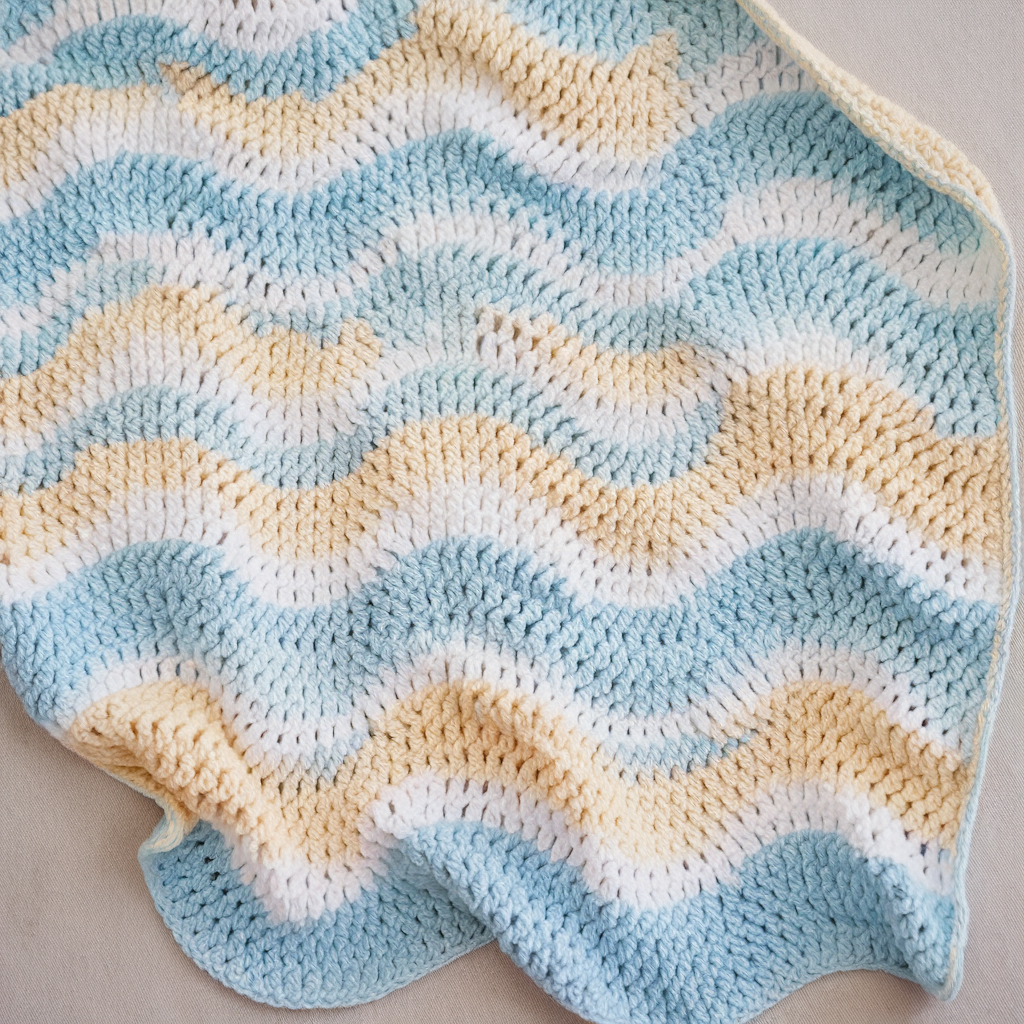
Skill level: Beginner (comfortable with increases/decreases)
Estimated time: 6–9 hours
Style: Classic ripple/wave chevrons formed with shell increases and decreases — rhythmic and fast.
Materials
- Yarn: Worsted weight (Category 4), baby-soft acrylic or acrylic blend — Medium: ~1100–1300 yds.
- Hook: 5.0 mm (H) or size for gauge
- Yarn needle, blocking pins
Gauge
- 14 HDC = 4 in in pattern.
Finished sizes (approx.)
- Small: 30 × 36 in, Medium: 36 × 46 in, Large: 40 × 54 in
Stitch pattern (classic ripple)
- Multiple: 14 + 3 (this multiple produces a balanced wave when using the stitch counts below).
Abbreviations
CH, SC, HDC, DC, TR, INC, DEC
Instructions — Medium
Foundation: CH 153 (multiple 14 + 3). Adjust in multiples of 14 for width changes.
Row 1 (RS): HDC in 3rd CH from hook and in each chain across. Turn.
Row 2: CH 2, *HDC in next 2; HDC2TOG twice (decrease over next 4 sts), HDC in next 6, (HDC inc in same st) 3 times (peak), HDC in next 6; repeat from * to end, ending with HDC in last 2 sts. Turn.
Explain peaks/valleys:
- The wave is formed by grouping three increases (peaks) and two pairwise decreases (valleys). The sample counts above create gentle waves about 6–7 stitches wide for the valley and 3-st peaks.
Rows 3–until desired length: Repeat Row 2. Work until blanket measures approx 46 in (or desired length). Fasten off.
Border
- Round 1: SC evenly around (3 SC in corners).
- Round 2: HDC in each SC around for two rounds to give the brim a consistent look. Fasten off.
Finishing
- Block lightly to even waves; use a spray bottle and pin the edges straight while drying.
Variations & tips
- Change colors at each repeat to produce bold ripple stripes.
- Combine different weights: two thinner strands held together make a soft, lofty ripple with smaller stitch counts.
3. Crochet Cozy Granite Stitch Baby Blanket Pattern
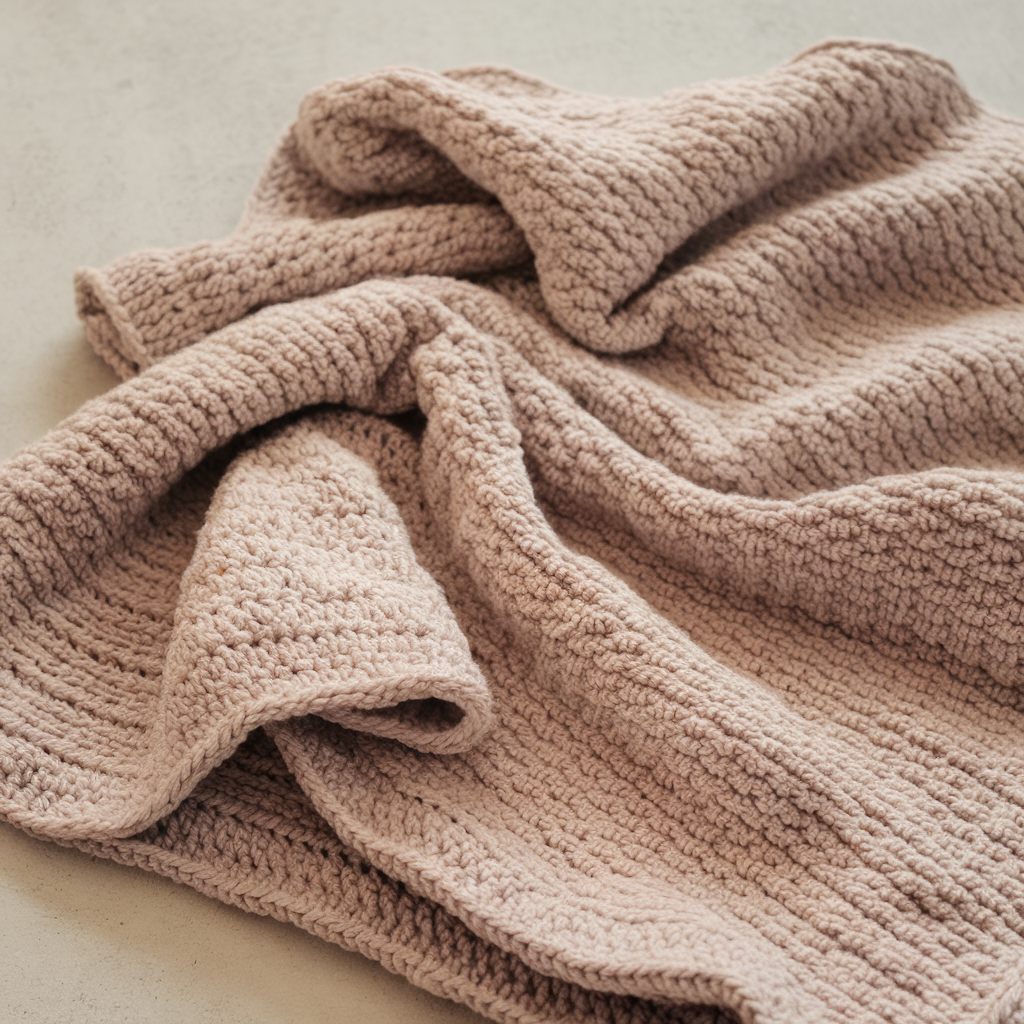
Skill level: Confident beginner / intermediate (very forgiving)
Estimated time: 6–10 hours
Style: Warm, squishy texture using the granite (linen/moss) stitch — dense, reversible, and machine-washable.
Materials
- Yarn: Worsted weight (Category 4), soft acrylic or acrylic/bamboo for drape — Medium: ~1000–1200 yds.
- Hook: 4.5 mm (7) or choose to get gauge
- Yarn needle
Gauge
- 20 rows granite stitch = 4 in (10 cm) with hook and yarn.
Finished sizes
- Small: 30 × 36 in, Medium: 36 × 46 in (samples), Large: 42 × 56 in
Stitch pattern (granite / linen)
- Multiple: even number of stitches + 1 turning chain
Granite stitch tutorial
- Granite stitch is typically worked as: SC in next st, CH 1, skip 1 st and then offset each row to create woven texture (sometimes worked as SC between chain spaces on following row).
Instructions — Medium (36 × 46 in)
Foundation: CH 129 (multiple even + 1). For Small use CH 107; Large CH 151.
Row 1 (RS): SC in 2nd CH from hook, CH 1, skip next chain, SC in next chain — repeat across to last st, SC in last chain. Turn.
Row 2: CH 1, SC in first CH-1 space, CH 1, SC in next SC — in other words, work SC into the chain spaces and chain 1 between. Turn.
Rows 3–end: Repeat Row 2 until blanket reaches desired length (~46 in). The fabric will be dense and slightly elastic — perfect for warmth.
Border
- Round 1: SC around entire blanket, placing 3 SC in each corner.
- Round 2: HDC in each SC around for a neat, slightly raised edge. Fasten off and weave ends.
Finishing
- Granite stitch has a linen-like look: it does not need blocking but a light wet block evens edges.
Variations & tips
- Hold two DK strands together for a thicker, loftier version.
- Add a picot edge (SC, CH 3, SL ST in SC) for a delicate finish if desired.
- The stitch is reversible; perfect for a double-sided look in two colors (change color every 20 rows).
4. Crochet Bernat “Little Dreamweaver” Inspired Baby Blanket Pattern
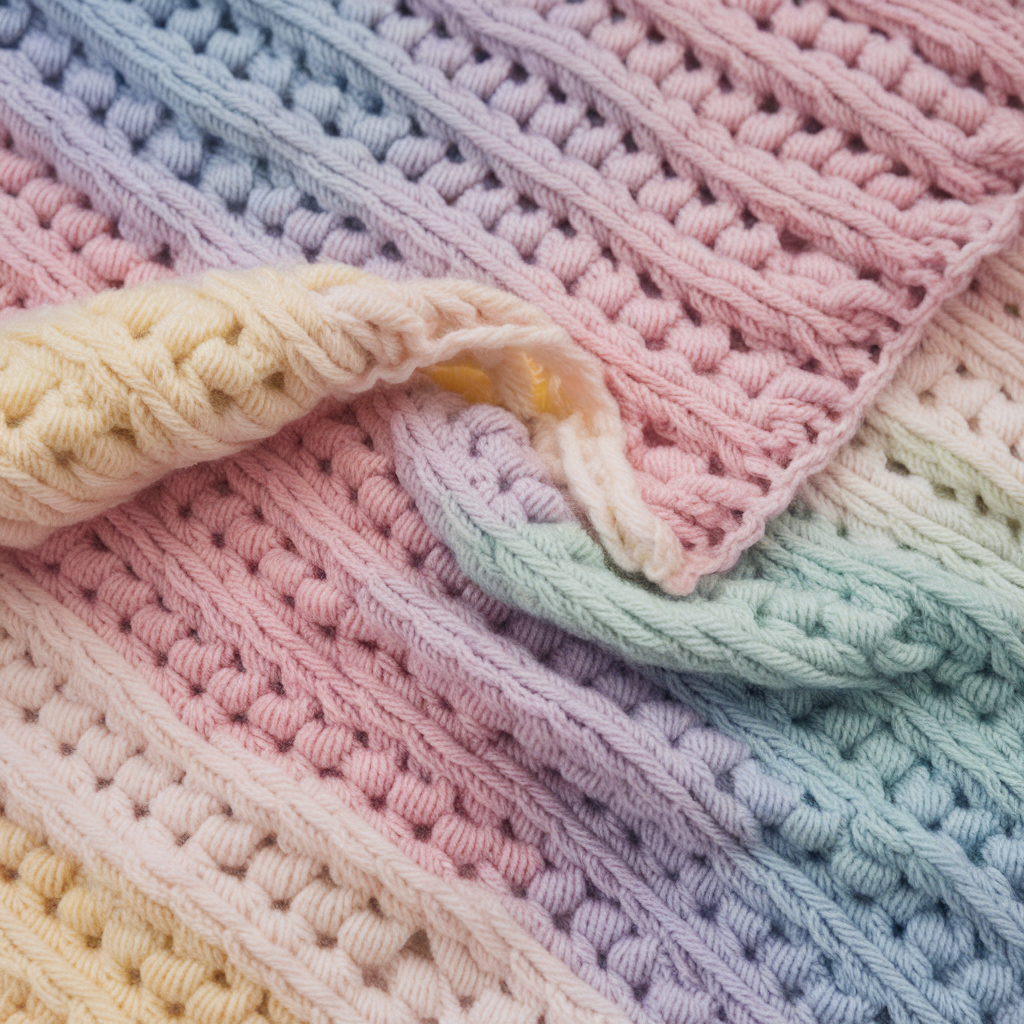
Skill level: Beginner to Confident beginner
Estimated time: 3–6 hours (fast because of self-striping yarn)
Style: Simple stitch pattern that showcases Bernat Little Dreamweaver or similar self-striping/variegated bulky yarn — easy, squishy, and quick.
Note: “Bernat Little Dreamweaver” is used here as an inspiration for how to use soft, self-striping bulky baby yarns. You can substitute any super-bulky or chunky baby yarn with similar yardage and care instructions.
Materials
- Yarn: Bernat Little Dreamweaver or similar bulky weight self-striping baby yarn — Medium: ~600–800 yds (bulky uses less yardage).
- Hook: 6.5–8.0 mm (K or L) depending on yarn label (choose a hook to get a soft, squishy fabric)
- Yarn needle
Gauge
- 10 dc = 4 in in pattern when using recommended hook
Finished sizes
- Small: 30 × 36 in, Medium: 36 × 48 in, Large: 40 × 56 in
Stitch suggestion
- Use an alternating DC/HDC pattern to create structure while letting the yarn colorways shine.
Instructions — Medium
Foundation: CH 84 (adjust to desired width; bulky yarn and bigger hook mean fewer chains). For small CH 70; large CH 98.
Row 1: CH 2 (counts as HDC), HDC in 3rd CH from hook and across to end. Turn. (Note: Using HDC gives a softer, denser fabric for baby blankets.)
Row 2: CH 3, DC in next st, HDC in next st repeat across. Turn.
Row 3: CH 2, HDC in DC, DC in HDC across to maintain texture. Repeat Rows 2–3 alternating until blanket reaches desired length (~48 in for medium).
Border
- Single round SC around, then one round of HDC for a polished edge. For chunky yarn, one or two rounds suffice.
Finishing
- Bulky yarns usually don’t require blocking; simply weave ends and fluff.
Variations & tips
- The magic of Little Dreamweaver-style yarns is color transitions — use simple stitches and let the yarn do the patterning.
- For a more upscale look, add a narrow rounded border in a solid color (2 rounds SC then slip-stitch picot).
5. Crochet Chevron Baby Blanket Pattern (Classic V-Stripe)

Skill level: Confident beginner
Estimated time: 7–10 hours
Style: Bold chevron stripes form a modern zigzag; choose two or three colors for a striking look.
Materials
- Yarn: Worsted weight (Category 4), soft acrylic or cotton blend — Medium: ~1200–1500 yds total (depends on number of colors).
- Hook: 5.0 mm (H)
- Yarn needle, stitch markers
Gauge
- 14 HDC = 4 in in pattern.
Finished sizes
- Small: 30 × 36 in, Medium: 36 × 48 in, Large: 42 × 56 in
Stitch pattern (Chevron)
- Multiple: 12 + 2 (this multiple will form clear peaks and valleys)
Abbreviations
HDC2TOG, HDC3TOG (as needed for sharper valleys), INC (2 HDC in same st)
Instructions — Medium
Foundation: CH 146 (multiple 12 + 2). For Small CH 122; Large CH 170.
Row 1: HDC in 3rd chain from hook and across. Turn.
Row 2 (chevron shaping): CH 2, *HDC in next 5 sts, HDC2TOG over next 2 sts, HDC in next 5 sts, 3 HDC in next st (peak); repeat from * across ending with HDC in last 2 sts so counts align. Turn.
Row 3: CH 2, HDC across following the previous shaping (work into HDCs and decreases/peaks as they sit). Repeat Row 2 for each row until blanket length reaches desired measurement (~48 in). Work color changes every 8–12 rows for large stripes or every 4 rows for thin stripes.
(Notes: HDC2TOG is worked by yarn over, insert in next st, pull up loop; yarn over, insert in following st, pull up loop; yarn over and pull through all loops.)
Border
- Round 1: SC around, placing 3 SC in each corner.
- Round 2: Reverse single crochet (crab stitch) around for a twisted rope edge, or two rounds of HDC for a softer edge.
Finishing
- Weave ends, block lightly to even chevrons.
Variations & tips
- For a softer look use HDC alternated with SC rows to adjust drape.
- Change color at the beginning of a row to avoid carrying floats across wide areas; weave in ends or use an invisible join.
6. Crochet Easy Stripes Cozy Baby Blanket Pattern
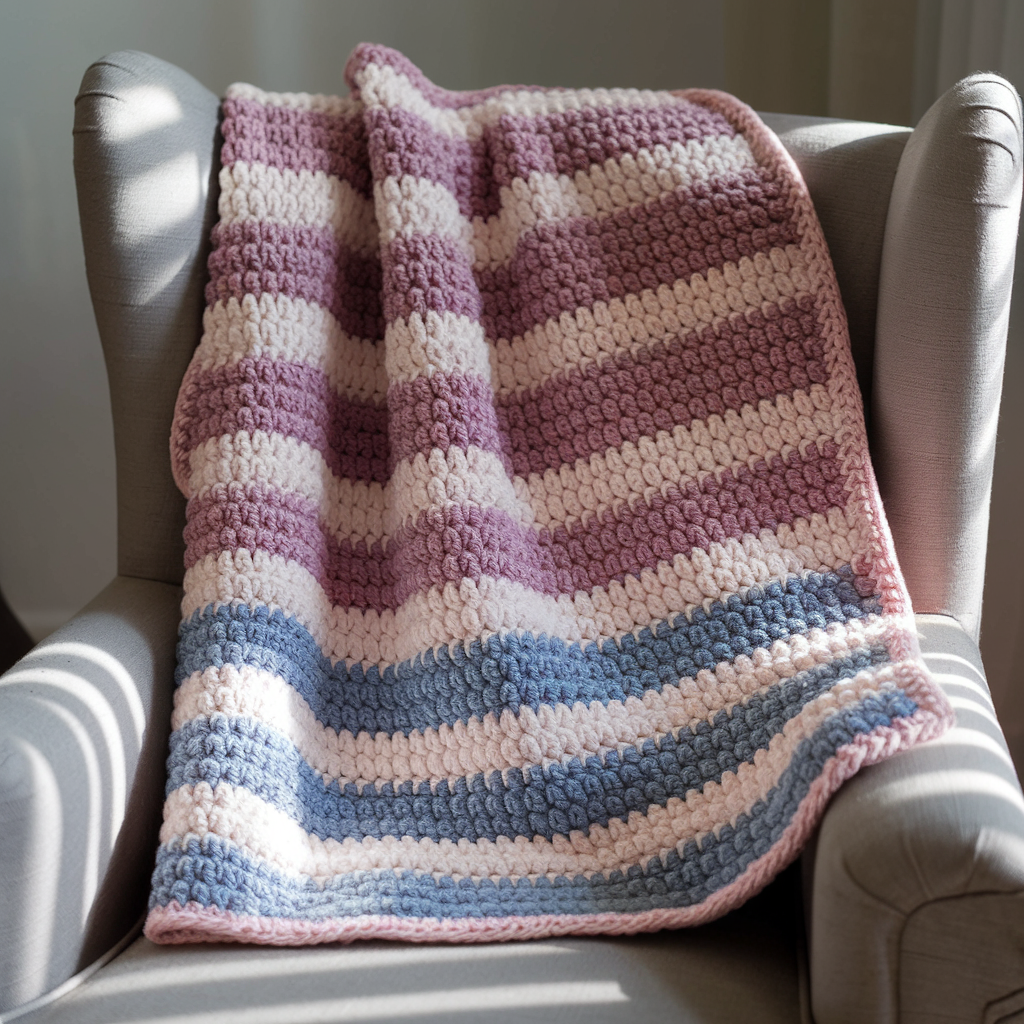
Skill level: True beginner
Estimated time: 4–8 hours
Style: Straightforward, very beginner-friendly stripes using HDC or SC; ideal for stash-busting or quick gifts.
Materials
- Yarn: Worsted weight, 2–4 colors for stripes — Medium: ~900–1200 yds total.
- Hook: 5.0 mm (H) or 4.5 mm (G) for tighter stitches
- Yarn needle
Gauge
- 14 HDC = 4 in
Finished sizes
- Small: 30 × 36 in, Medium: 36 × 46 in, Large: 42 × 56 in
Stitching plan
- Use HDC for a soft, squishy texture; SC for a denser, more structured blanket. Pattern uses a chain multiple equal to width in HDC terms.
Instructions — Medium
Foundation: CH 136 (approx width; adjust based on your gauge). For Small CH 116; Large CH 156.
Row 1: HDC in 3rd CH from hook and across. Turn.
Rows 2–6 (color A): CH 2, HDC across. Turn. (5 rows in first color creates a stripe height of about 1.25–1.5 in; change stripe height to taste)
Change color: Join color B with SL ST and continue 5 rows of HDC. Alternate colors in the sequence you like until blanket reaches desired length (~46 in). For subtle look use tonal variations; for bold look use high contrast.
Border
- Single round SC in a neutral color, then one round of HDC for depth. Optional: crab stitch for decorative edge.
Finishing
- Block only if using cotton; acrylic usually recovers shape by hand-shaping.
Variations & tips
- For a more vintage look use a linen stitch for one or two stripes: SC, CH1, skip 1 row to create textured bands.
- Use a self-striping yarn for part of the blanket to speed up color transitions.
Final finishing tips & care for all blankets
- Weave in ends securely. Baby blankets are washed often — hide ends by threading them through several stitches and knotting if necessary.
- Blocking. Cotton and blends benefit from wet-blocking to square edges and open lace. Acrylic can be lightly steam blocked but read yarn label warnings.
- Lining/Backing. For extra warmth, sew a flannel or minky backing to the blanket; baste through the layers and stitch with a wide zigzag or by hand.
- Safety. Avoid large beads or buttons on blankets intended for infants under a year; instead use embroidery or sewn-in colorwork.
- Care labels. Consider stitching a small care label with washing instructions and fiber content if you plan to gift or sell the blanket.
Conclusion
These six baby blanket patterns offer a variety of textures, stitch techniques, and visual styles so you can choose a quick gift project or a longer, heirloom-quality piece. The lace and ripple designs are airy and classic; the granite stitch and Bernat Little Dreamweaver-style patterns are warm and fast to make; chevron and stripes give strong graphic looks that suit modern nurseries. Each pattern is intentionally adaptable — change yarn, hook, or stripe width to suit your yarn stash and the recipient’s needs.




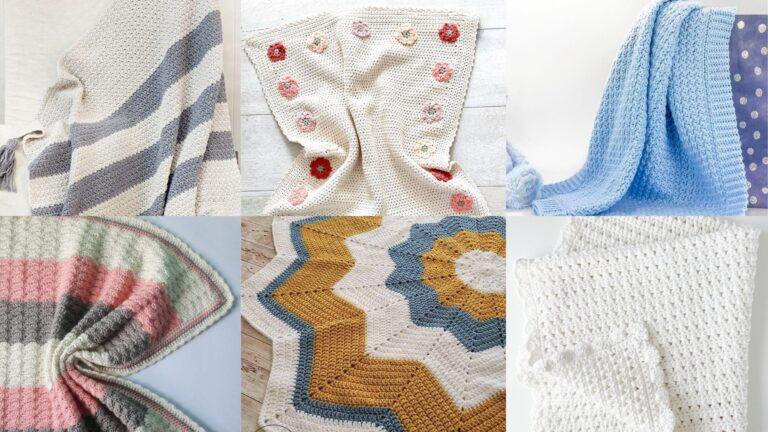
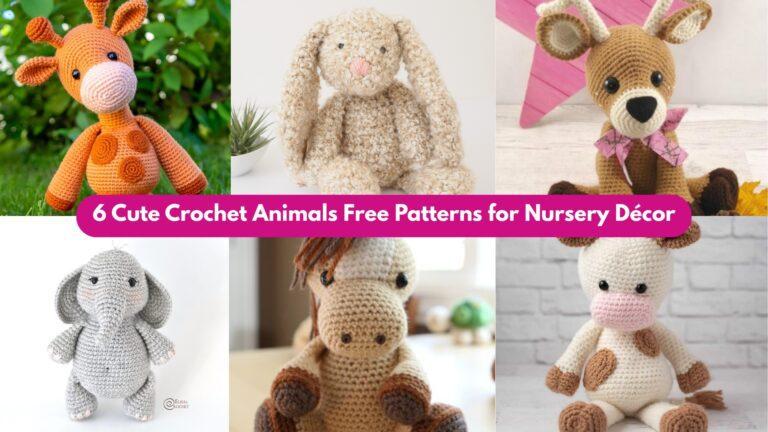

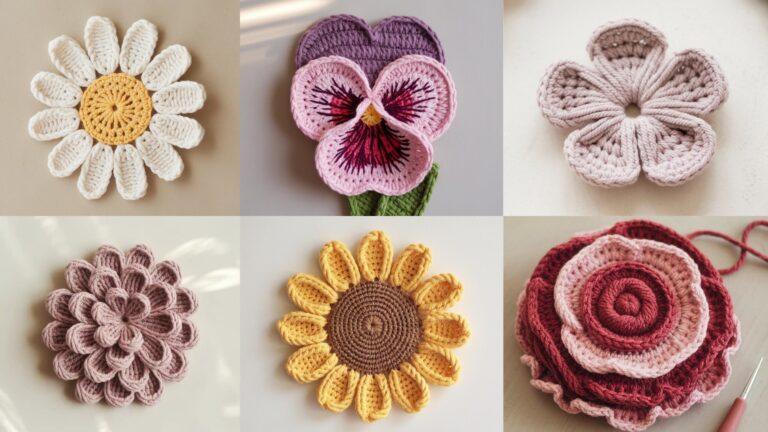
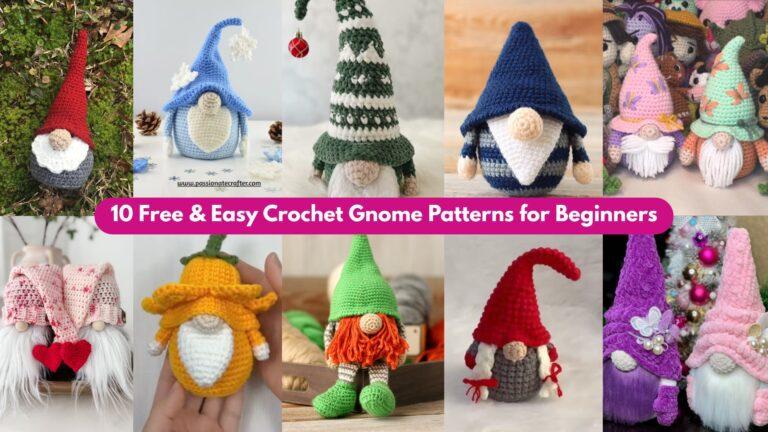
Looking forward to reading more from you.